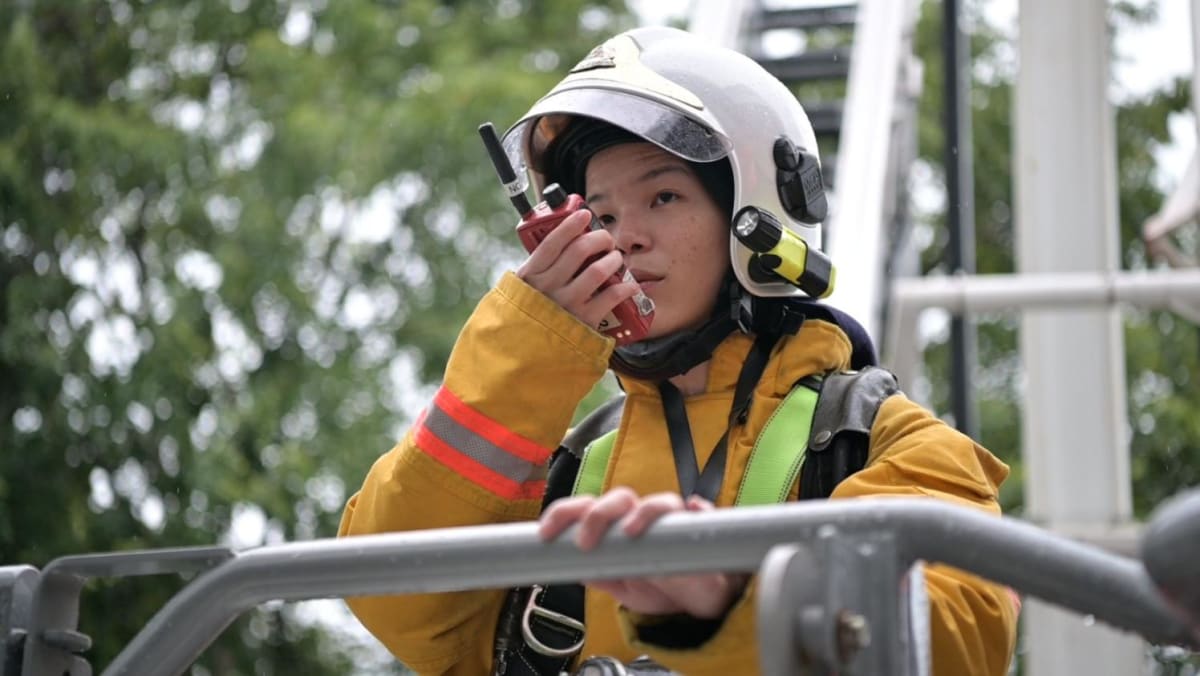
“The default firefighting gear is called ‘bunker gear’. It’s fire retardant so it’s very hot. On top of that, we have to wear the breathing apparatus set, which is really heavy. Then there’s the helmet and additional equipment, such as the hose and breaching tools,” she told me, referring to the tools used to break through an entrance.
“Acclimatising to the heat was the hardest bit for me. I could train for the weight-carrying, to a certain extent. At the gym, you can try and increase your strength and endurance.
“But it was only after wearing the suit every day over a couple of months, at the end of the training course, that I finally felt a bit more comfortable in it,” she said.
“Along the way, we drank water and if we really couldn’t take it, we’d let our trainers know. But we pushed ourselves as much as we could.
“Another thing we’d do to help ourselves was to put on the suit outside of our training time (to get comfortable with it),” LTC Fan added.
“WITH RANK COMES RESPONSIBILITY”
LTC Fan, who joined SCDF after receiving a Local Merit Scholarship from the Ministry of Home Affairs (MHA) in 2008, started out as a rota commander at Tampines Fire Station, a role she describes as “a foundational posting for all SCDF senior officers”.
She has held several postings, including as an associate director at MHA, since then. Last year, she was appointed commander of Sentosa Fire Station.
“Most senior officers would want to be a commander at some point in their career and I’d always found it to be a fulfilling position. But with rank comes responsibility and there are challenges associated with that,” she said.
As commander, LTC Fan’s day typically starts at 7am, when she participates in the station’s daily drill, during which her team sometimes simulates rescue scenarios.
The shift change at 8am gives her a chance to catch up with shift supervisors, better known as rota commanders, after which she attends meetings and tackles administrative responsibilities.
“Operational readiness is something we cannot compromise on so I’ll supervise to make sure they do proper equipment checks. Sometimes, I do random spot checks.
“We handle some items that are more sensitive or controlled and I make sure these things have been signed in and out properly,” she said, adding that being meticulous is another essential part of her job.
“You also have to trust your key appointment holders,” she said. “Respect and trust have to be built over time. You trust they can do their work and they trust you to have their back in certain situations. When there are errors, we must be able to stand with them.
“There needs to be a balance between trusting them and knowing when you have to step in, such as when you have to oversee things yourself, intervene if there are disagreements between rotas or let headquarters know we need more time for a project.”
